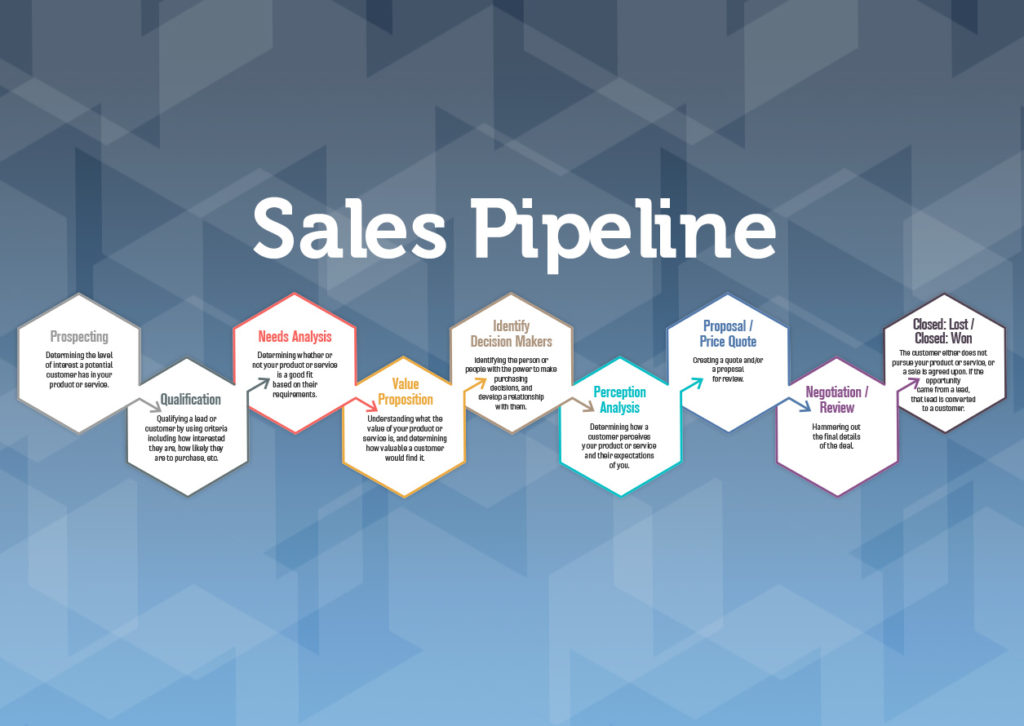Navigating the dynamic world of sales and marketing often feels like trekking through a labyrinth of buzzwords, abbreviations, and jargon. For those on the outside looking in, or even for industry novices, terms like pipeline in business might sound more suited to oil rigs than office setups. So, what’s all the fuss about pipelines in sales and marketing? Come along, and let’s explore this intriguing topic in a way that’ll make even a complex subject feel like a walk in the park.
The Conceptual Framework: More Than Just a Word
When we define a pipeline, we unlock the doors to one of the most pivotal concepts that drive the wheels of revenue in businesses. You could imagine a pipeline as a long, transparent tube, revealing various stages a potential customer traverses from the moment they first interact with a brand until the time they become a paying customer. Picture a clear tube filled with a mix of colored balls, each representing a unique prospective customer. This imagery provides a multidimensional visualization of the customer pipeline, bringing theoretical aspects to life.
The idea of a pipeline transcends sectors, be it a SaaS company selling subscriptions or a retail outlet aiming for footfall. Essentially, the pipeline meaning in business gives you the key metrics and touchpoints for scrutinizing the effectiveness of both your sales and marketing strategies. It’s like the DNA of your business—each stage has a specific gene, dictating how well you’ll convert your leads into loyal customers.
However, it’s critical to understand that a pipeline is not set in stone. It’s a dynamic, fluid model requiring periodic tweaks and modifications. If you think your business can run on autopilot with an initial pipeline setup, you’re on a one-way street to inefficiency. This notion helps define pipeline in business as an evolving concept that continually adapts to market trends, customer behaviors, and internal company shifts.
Getting Into the Nitty-Gritty: The Stages
While pipelines can look diverse depending on industry or even company culture, they generally contain a few staple stages. Let’s define pipeline through its common phases: lead generation, lead qualification, proposal, negotiation, and closing. It starts with a wide-open entry where potential leads pour in—think of social media advertising, cold calls, or referrals as the faucets filling this segment with the pipeline.
Next comes qualification, a crucial filtration stage. Here you separate the ‘wheat from the chaff,’ identifying who among your leads is genuinely interested and likely to make a purchase. It’s almost like a quality assurance phase for your customer pipeline, ensuring that the following stages aren’t congested with unqualified or uninterested leads.
The next steps involve the nitty-gritty: proposals and negotiations. This is where the rubber meets the road, with sales teams engaging leads through product demos, price quotes, and, yes, the inevitable haggling. Consider this the narrowest segment of your pipeline, where you focus on personalized engagement and problem-solving to coax leads into becoming paying customers.
Lastly, the closing stage is where all the prior stages’ efforts either materialize into a sale or dissipate into a learning experience. This stage is often seen as the moment of truth in the pipeline in business, and rightfully so.

The Backbone of Marketing: Building Awareness and Engagement
One often overlooked aspect is the role of the pipeline in marketing. Think of marketing as the stage crew in a theater production. They’re not under the spotlight, but without them, the show can’t go on. From generating initial interest through social media campaigns to post-purchase customer retention strategies like newsletters and loyalty programs, marketing keeps the pipeline flowing.
In today’s digital age, marketing’s role in the pipeline has expanded exponentially. They’re no longer just responsible for building brand awareness; they’re now integral in almost every phase. The customer pipeline meaning in a marketing context refers to tracking a potential buyer’s journey through various touchpoints, whether it’s a Google search, an Instagram ad, or a promotional email.
The marketing department uses data analytics to refine strategies, thereby fine-tuning the pipeline’s efficiency. If you ever wondered what is a pipeline in business from a marketing viewpoint, it’s essentially a treasure map, dotted with X’s marking potential customer interactions and conversions along the journey.
Marketing doesn’t just get people into the pipeline; they ensure the pipeline itself is optimized for the best possible customer experience, increasing the chances of turning leads into sales. This exemplifies what pipeline means in the broader framework of business operations.
Optimizing Your Pipeline: A Continuous Process
You’ve created a pipeline. Great! But it’s not a ‘set it and forget it’ element. Continuous optimization is the name of the game. One way to measure the health of your pipeline is by examining conversion rates at each stage. Are potential customers dropping off after the proposal stage? Maybe it’s time to tweak the pricing model or offer more value.
It’s like maintaining a well-oiled machine; each cog, wheel, and gear has to be in top shape for the entire system to function smoothly. Those in sales and marketing often conduct what’s called ‘pipeline reviews’ to identify bottlenecks or points of friction that may hinder leads’ progression to becoming loyal customers. These reviews are crucial to understanding what is a pipeline in business and how to maximize its efficiency.
Various tools can assist you in this journey. Customer Relationship Management (CRM) software, for example, offers a streamlined way to manage and analyze your pipeline data. Moreover, machine learning algorithms can predict future sales trends based on current pipeline performance, offering insights that were once the stuff of science fiction.
Conclusion
So there you have it: the pipeline is much more than just a corporate buzzword or a confusing metaphor. It’s the lifeblood of sales and marketing operations. When we speak of the pipeline meaning, it’s not just about converting leads into customers; it’s about comprehending customer behavior, optimizing marketing strategies, and perpetually refining business models for success. In a world that’s continuously evolving, understanding your pipeline is not just beneficial—it’s essential.


